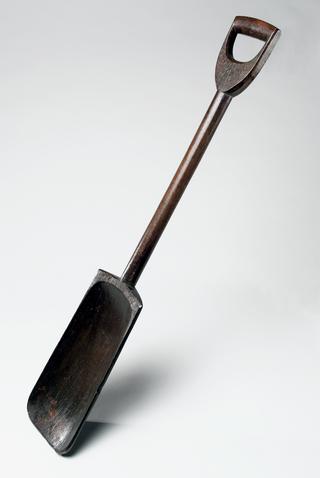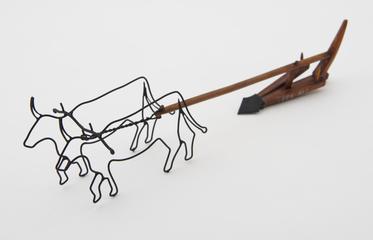
Model of 3-section zig-zag harrow

Model of 3-section zigzag harrow, 1850.
The harrow is an implement of equal antiquity to the plough, its use being to further reduce the soil already ploughed, tear root weeds out of such soil and to cover newly sown seeds. The earliest form of harrow was probably a medium-sized bush such as hawthorn, cut and pruned so as to lie flat, which when drawn, made a number of deep parallel scratches on the ground. The next stage was the bush harrow which was a wooden frame through which thorn bushes were woven. This was then replaced during the early 19th century by chain link harrow. Another early type of harrow consisted of a rectangular wooden framework of bars and cross-bars with projecting wooden spikes or tines. Later, triangular and rhomboidal frames were used and regarded as improvements upon the old rectangular form. By the 16th century iron tines were used in place of the wooden ones, an from the early 19th century, many of the frames were also in iron.
Based on a design patented by W. Armstrong in 1839, this type of harrow was made by Howards of Bedford. The zigzag form of the frames allowed each tine to cut a separate track at equal distances, and to work very close to each other without the implement clogging in wet soil. Another good design feature was the principle of draught which was from the centre. As a result, any irregularity in the pace of the hoses did not affect the relative position of the harrows.
Details
- Category:
- Agricultural Engineering
- Object Number:
- 1932-419
- Materials:
- metal (unknown), paint and wood (unidentified)
- Measurements:
-
overall: 75 mm x 720 mm x 450 mm, 2.538 kg
- type:
- model
- credit:
- Ransomes plc; Ransomes, Sims and Jefferies Limited




